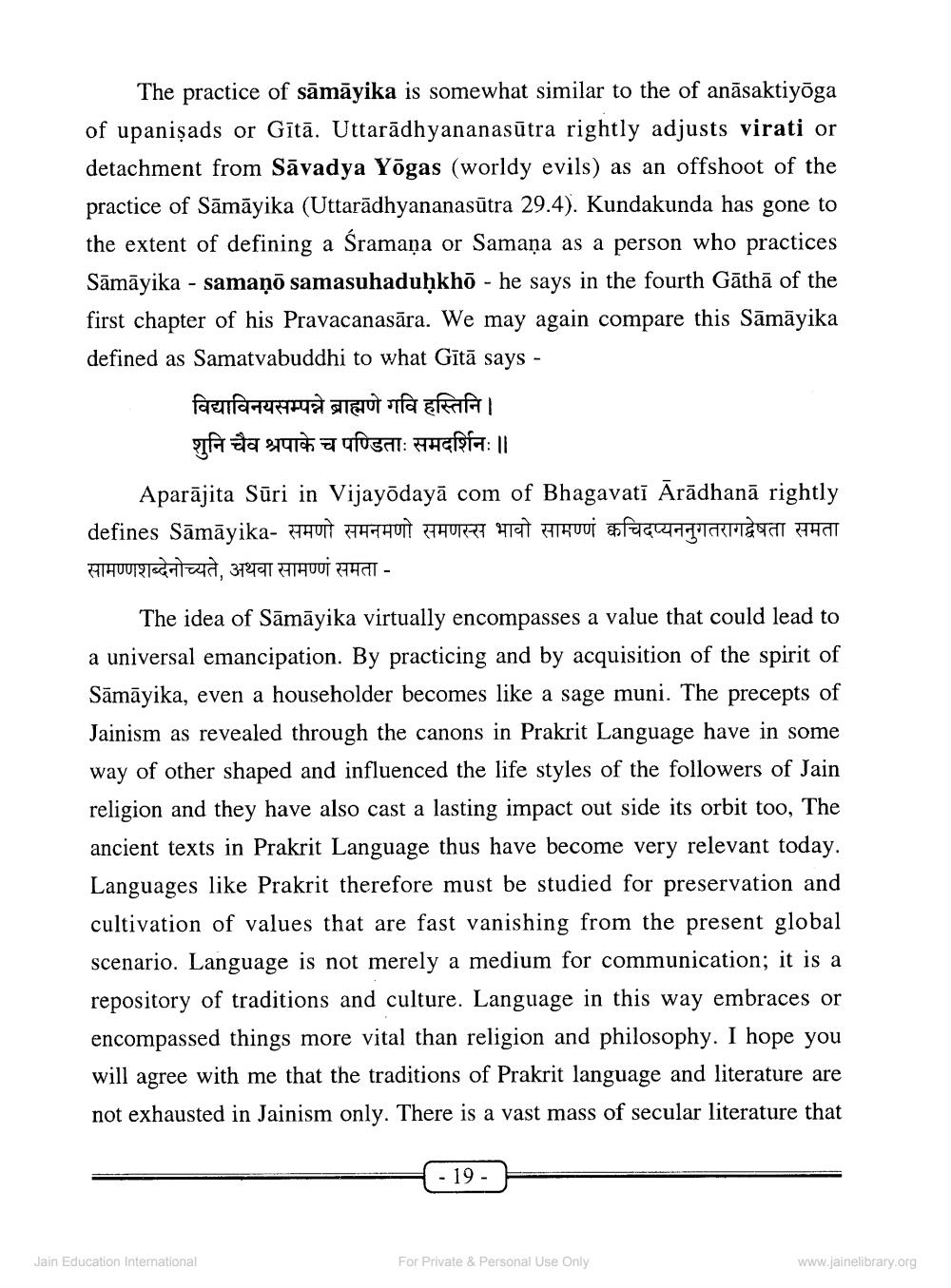________________
The practice of sāmāyika is somewhat similar to the of anāsaktiyoga of upanișads or Gītā. Uttarādhyananasūtra rightly adjusts virati or detachment from Sāvadya Yogas (worldy evils) as an offshoot of the practice of Sāmāyika (Uttarādhyananasūtra 29.4). Kundakunda has gone to the extent of defining a Áramaņa or Samaņa as a person who practices Sāmāyika - samaņā samasuhaduḥkhā - he says in the fourth Gāthā of the first chapter of his Pravacanasāra. We may again compare this Sāmāyika defined as Samatyabuddhi to what Gītā says -
विद्याविनयसम्पन्ने ब्राह्मणे गवि हस्तिनि ।
शुनि चैव श्रपाके च पण्डिताः समदर्शिनः ॥ Aparājita Sūri in Vijayõdayā com of Bhagavati Ārādhanā rightly defines Sāmāyika- HAHUT AHAHUT HHURRI HÌ HIHUU afeGuia ARMENT THAT सामण्णशब्देनोच्यते, अथवा सामण्णं समता -
The idea of Sāmāyika virtually encompasses a value that could lead to a universal emancipation. By practicing and by acquisition of the spirit of Sāmāyika, even a householder becomes like a sage muni. The precepts of Jainism as revealed through the canons in Prakrit Language have in some way of other shaped and influenced the life styles of the followers of Jain religion and they have also cast a lasting impact out side its orbit too, The ancient texts in Prakrit Language thus have become very relevant today. Languages like Prakrit therefore must be studied for preservation and cultivation of values that are fast vanishing from the present global scenario. Language is not merely a medium for communication; it is a repository of traditions and culture. Language in this way embraces or encompassed things more vital than religion and philosophy. I hope you will agree with me that the traditions of Prakrit language and literature are not exhausted in Jainism only. There is a vast mass of secular literature that
-19
Jain Education International
For Private & Personal Use Only
www.jainelibrary.org




